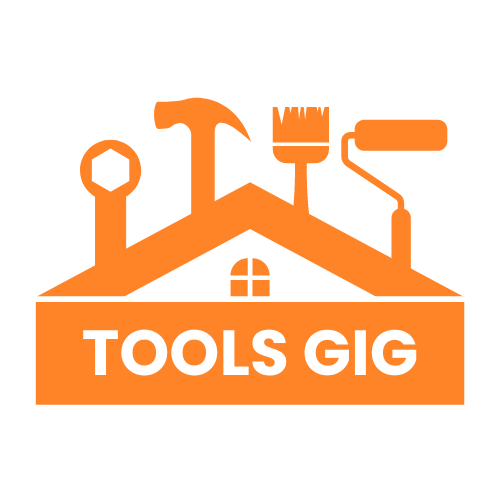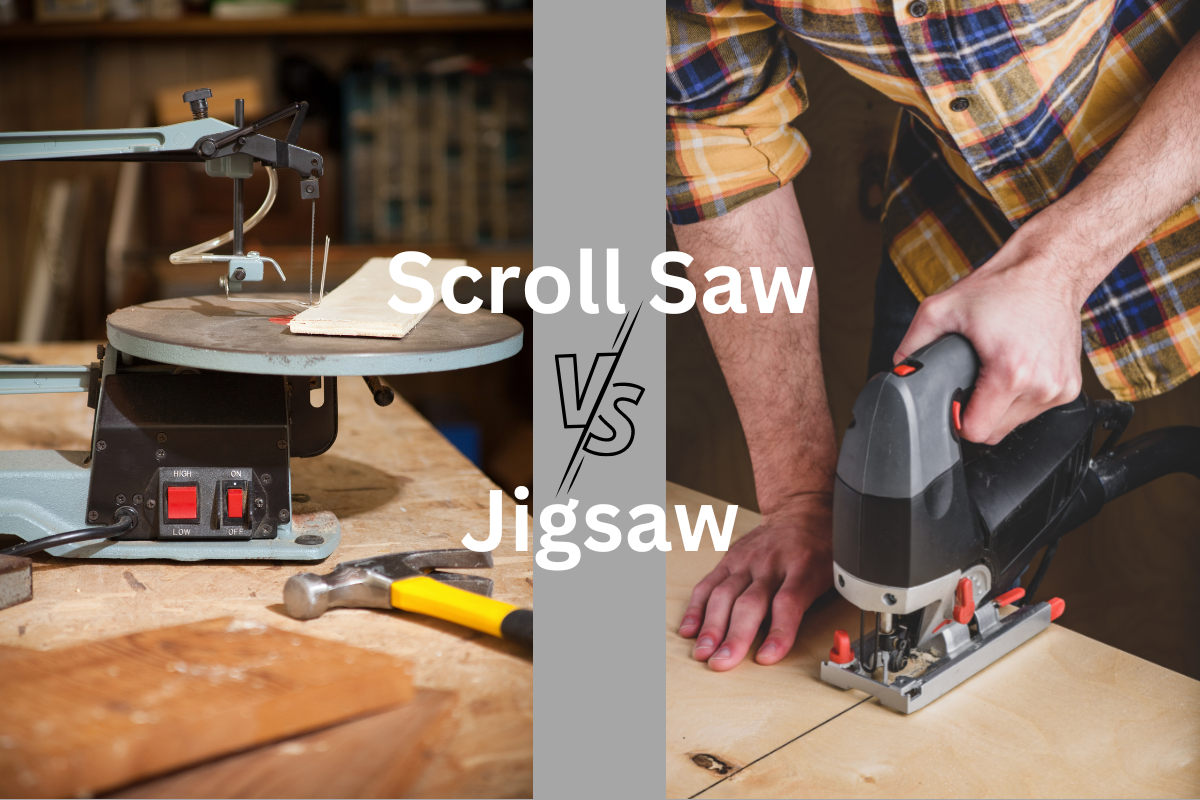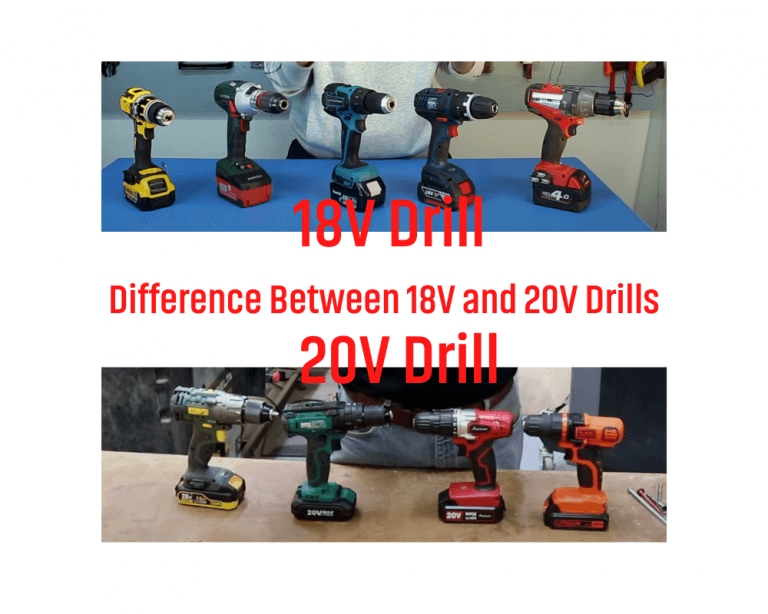Scroll Saw vs Jigsaw – Which one should I choose?
As an Amazon Associate I earn from qualifying purchases.
A scroll saw is a stationary tool, and a jigsaw is a handheld tool. Have their own advantages and disadvantages for providing different cuts on different materials.
A jigsaw is more versatile; you have to hold and slide it on the material to have quick straight, curved, or flat patterns and designs at a low cost. In contrast, a scroll saw uses thin blades; you have to hold and slide the material on the scroll saw table to create intricate patterns and designs in a precious manner.
Let’s compare Scroll saw vs Jigsaw and explain their benefits and drawbacks so that you can pick one easily according to your project, space, and budget.
Contents
Comparison Table Between Jigsaw and Scroll saw
| Features | Scroll saw | Jigsaw |
| Generate power | Up to 1.5amp | Up to 7.2amp |
| Speed | Slow 400 to 1800 SPM | Faster 500 to 3500 SPM |
| Blade type | Fairly standardized blades | T-shank and U-shank |
| Main purpose | Intricate patterns and designs | Cutting and shaping |
| Power supply | Corded | Corded and cordless |
| Cut quality | Smooth | Rough |
| Cuts | Wood, metal, plastic | Wood, metal, plastic, tile, fiberglass |
| Complicated cuts | Yes | less |
| Straight cut | Average | Better |
| Deep cut | Less deep | Deeper |
| Round edges | Yes | No |
| Changing blades | Easy | Easy |
| Weight | More | Less |
| Safety | Average | Better |
| Burn | Less | More |
| Maintenance | Tough | Easy |
| Portable | No | Yes |
| Price | Costly | Affordable |
Pros and Cons Between Scroll Saw and Jigsaw
Scroll saw
This stationary tabletop saw has a variety of tooth sizes, and types, including small and thin blades, compared to sewing saw blades. On this saw, you have to push and move the workpiece on the table to make shapes, complex cuts, and delicate cuts, making it ideal for decorative and craft projects.
Jigsaw
This handheld saw also uses different sizes and teeth but narrow and straight blades, and you have to move the saw on the workpiece to make a straight, curved, and detailed cut, making it ideal for DIY projects.
Unlike the scroll saw, they are portable and available in both corded and cordless versions, allowing you to work anywhere.
Differences between Scroll saw and Jigsaw
Weight and size
Because it is stationary, a tabletop scroll has a larger design and requires more workspace than a jigsaw. On the other hand, a jigsaw is easily transportable, can hold any working place, and can hold a jigsaw and workpiece for less weight and size.
Note: Please keep in mind that some scroll saw models are lightweight and portable.
Power
A scroll saw is less powerful than a jigsaw. This is because a scroll saw uses up to a 1.5-amp motor, while a jigsaw uses up to a 7.2-amp motor, giving the jigsaw more power to run at a fast speed.
Cutting speed
As for more power, a jigsaw rotates the blade quicker than a scroll saw and makes 500 to 3500 strokes per minute. In contrast, a scroll-saw makes 400 to 1800 strokes per minute.
Blade types
A jigsaw uses two types of blades: a T-shank and a U-shank. In contrast, a scroll saw uses fairly standardized blades.
Blade size
A jigsaw uses longer blades than a scroll saw. A jigsaw uses narrow and straight (3 to 10-inch) blades, and a scroll-saw uses thin and tiny blades that can be up to 8.5 inches long.
Blade change
It is simpler to change the blades in both. To change the blade on a scroll saw, however, you must first loosen the tension and then loosen the top and bottom screws, whereas, in a jigsaw, you simply unscrew or click the spring-loaded clamp.
Depth of cuts
Because jigsaw blades are longer than scroll saw blades, they can cut material up to 6 inches long. In contrast, a scroll saw can cut materials up to 2.5 inches long.
Usage
A jigsaw is mainly used to make straight lines, angled lines, curves, shapes, and flat pattern cuts. In contrast, a scroll is mainly used for designing work to make shapes, plunge cuts, complex, delicate, intricate curves, and corner cuts in a precious manner.
Cuts
Depending on the teeth, size, and blade material, a jigsaw and scroll saw can cut wood, plastic, brass, copper, and metal.
But cutting thicker and longer wood, brass, copper, metal, fiberglass, and tile is easier on a jigsaw than on a scroll saw.
Thin and Thick cuts
A scroll is preferred and excellent for cutting more thin materials. In contrast, a jigsaw is more comfortable for cutting thick materials.
Versatility
A jigsaw is more versatile than a jigsaw, as it has portability and is easily moveable and holdable in hand while cutting. In addition, you can cut any size of material, large or small, whereas a scroll saw is better suited for small cuts.
Also, a jigsaw is more versatile, as it can cut not only wood, metal, and plastic but also tile and fiberglass.
Accuracy
As scroll saw blades move slower for that reason, on precise and detailed cuts, a scroll saw provides more accuracy, and on straight, bevel, shape, and curve cuts, a jigsaw provides more accuracy.
Safety
A jigsaw is relatively safe to use because it has a guard around the sharp blade that prevents users from directly facing the blades. In contrast, in a scroll saw, you have to push wood towards the blade, and unconsciously, accidents can happen at that time.
Price
Comparing different models, I got the Jigsaw is more affordable than the Scroll saw. Spending around $50 to $200, you will get an average to good quality jigsaw, and around $100 to $400; you will get an average to good quality scroll saw.
Which One should I choose: Scroll saw or Jigsaw
If you are creative and artistic and want to do decorative and craft projects to make precise and detailed shapes, plunge cuts, complex puzzle cuts, delicate and intricate curves, and corner cuts, then you can choose a scroll saw.
On a scroll saw, you can thin materials better, and the cuts will be so preciously clean that, most of the time, you don’t need to sand after cutting.
But remember that for a scroll saw, you need more space in your garage and have to keep a rich amount of money in your pocket.
On the other hand, if you want to do DIY projects to make a precious straight, angle, and curve cuts, including shapes and intricate cuts, with great versatility, accuracy, and great control at a lower price, then choose a jigsaw.
With a jigsaw, you can cut thicker materials, even tile, and fiberglass. Also, when needed, a jigsaw can be used instead of a scroll saw if you have great practice and control or are a pro worker.
Frequently Asked Questions
Can you cut a straight line with a scroll saw?
As its blades are so tiny and thin for that, it’s really tough to have a perfectly straight line cut with a scroll saw. But by doing this, you can have that easily.
First, cut the material as small as your scroll saw table prefers. Then mark a straight line on the material to indicate how much you want to cut. After that, take a long, straight board, place it on the table, and attach it using clamps.
Now take the material and cut it, sliding it along the board you have attached. This will help you have a straight cut.
What needs to be adjusted before you use the scroll saw?
Mainly, three things need to be adjusted before you use the scroll saw. First, check the blade tension; adjusting it will reduce your blade breakage. Second is the drop foot, adjusting till the material surface holds the material that will reduce vibration.
The third is the sawdust blower; though the scroll saw does not produce much dust, it can hide the line while cutting. Adjust it as much as possible on the cutting point to keep the cutting area clean.
What causes scroll saws to break?
A scroll-saw uses thin blades that could break at any time while sawing. But it breaks more if you adjust too little tension or too much tension. For that reason, apply proper tension that will reduce scroll saws to break.
Conclusion
A jigsaw and a scroll-saw are both useful tools that excel at their respective cutting tasks. As scroll saw use thin blades, they make intricate pattern and design in a precious manner.
Whereas the jigsaw is more versatile and useful for quickly cutting flat patterns and designs in a wide range of materials at a low cost. I hope I have discussed every possible perspective; now you have to choose which is preferable according to your project, space, and budget. Thank you.







